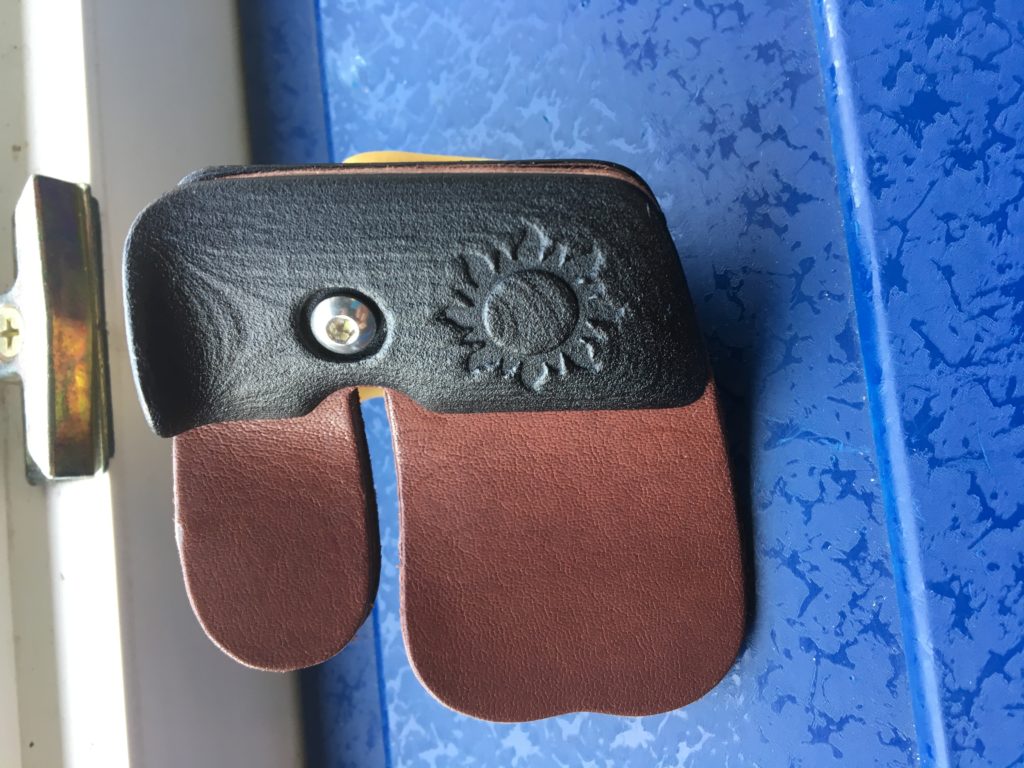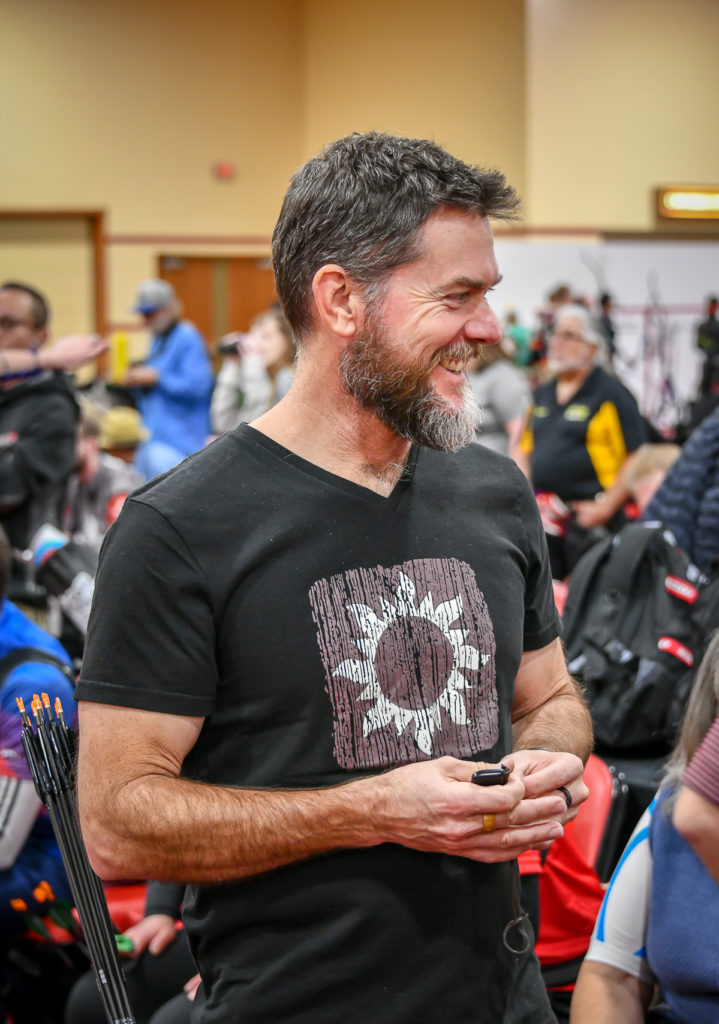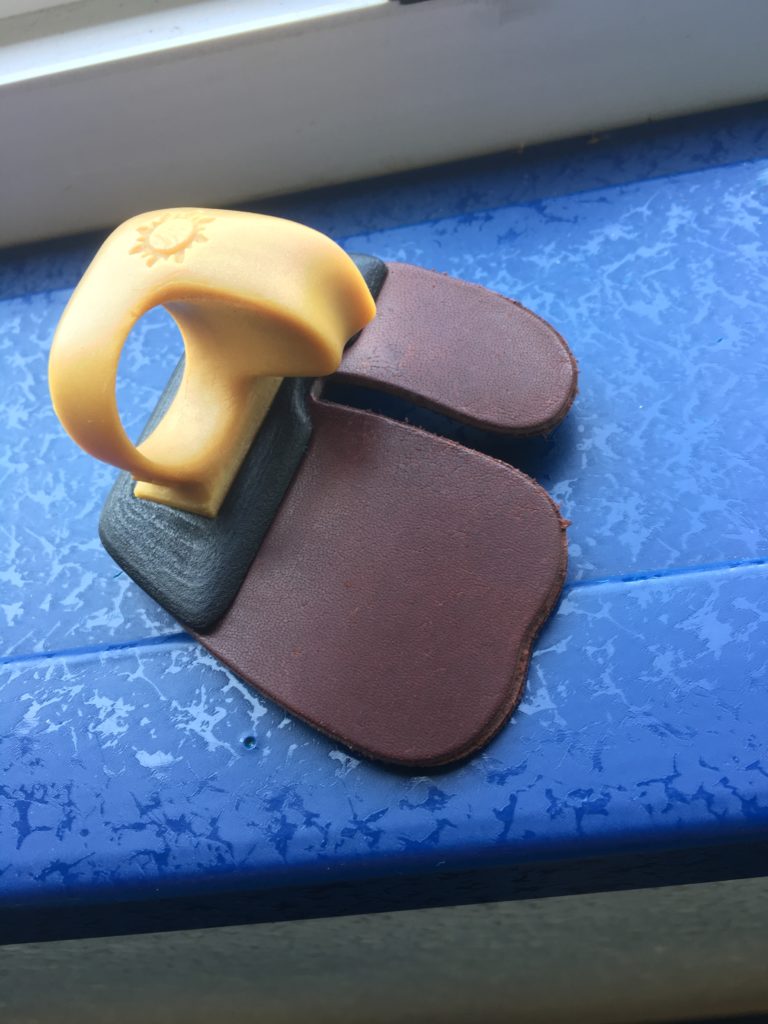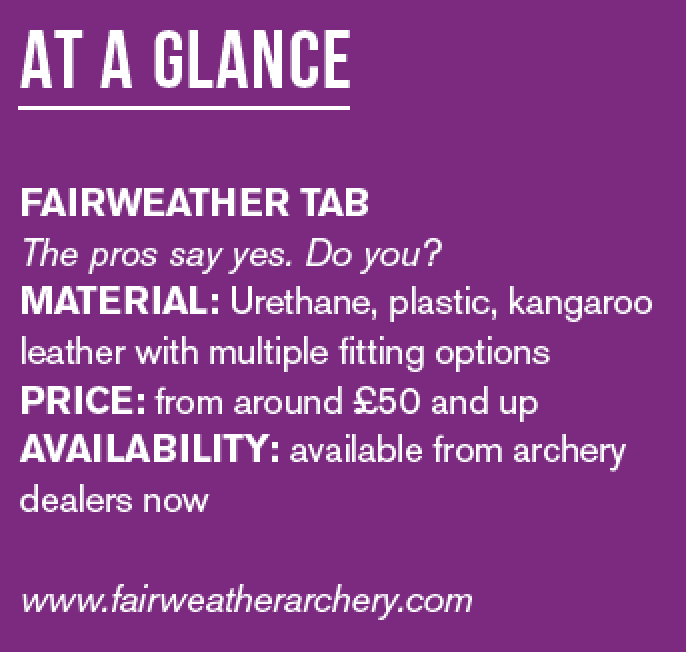
The archery tab designed by the 2000 Olympic gold medallist has been gaining some major fans, including Arne Metzlaff.
At the European Games this year, Simon Fairweather posted a graphic on Facebook pointing out that the top four men in qualification: Mete Gazoz, Pierre Plihon, Sjef van den Berg, and Mauro Nespoli were all using his eponymous tab. (Nespoli would go on to win the individual competition.)
It was an astonishing coup for his tiny company. Several other top recurve archers, including Aida Roman and Gabi Bayardo also use the tab. With multiple options available, why have so many of the elite taken to this bit of kit?
Australian Fairweather won individual gold on home turf at Sydney 2000, and has remained active in archery ever since. He started producing these tabs in 2014.

Recurve tabs present several issues. Every tab becomes unique to every shooter. The leather, over time, moulds to the fingers and the way the tendon is grasped and placed on the fingers. Furthermore, there are multiple other preferences, such as with or without anchor plate, using a ‘heavy’ or light tab and many more.
The Fairweather tab is very different from most. It’s extremely simple, for one. The entire tab is only held together by a single screw. (Many tabs have eight or more.) This screw fixes the finger separator, the anchor plate and the leather.
The leather is clamped between two plates, and the screw is pushed through the plates in the finger separator and thus countered. Even in an endurance test, this screw does not move.
The base plates are available in four different sizes (S, M, L, XL.) The base itself is a kind of integrated anchor plate. This is very small, but completely sufficient. The shape of the base plate reminds me a little of the AAE Cavalier tab, but narrower.
The finger separator not only serves to hold the tab together, but is also made of a special material: urethane rubber. The finger separator serves to keep the index and middle finger apart and also includes a ring. This ring is placed over the middle finger and secures the hold of the tab in the hand during shooting.

Conventional tabs use either rubber or paracord bands. Many modern tabs ‘fix’ the tab on the index, middle and ring fingers at the same time. Fairweather does not follow this trend. However, the comfort of the tab is very high due to the material used.
The ring is available in nine different sizes, from 18mm to 25mm. To find out the right size for you, you simply measure – just like with jewellery – the circumference of your ring finger at the thickest point, on the joint. The urethane rubber material used is relatively soft and very flexible, yet offers a very long life.
Usually, cordovan leather is used for tabs. However, Simon Fairweather opted for kangaroo leather, which has some interesting features for archers, and is a bit thinner compared to cordovan. When testing the tab it was noticeable that it was already ‘shot in’ after less than 100 arrows, and it felt very pleasant from the beginning.
A tab normally needs a lot of shots before the ‘typical shape’ has formed. Another excellent feature of the leather is the behaviour in the rain. It retains its flexibility and still provides a very pleasant shooting sensation. (It is recommended to wet the leather pieces down with warm water when new.)

The tab comes standard with three layers of kangaroo leather, with all three layers made of the same material. The leather is available in different lengths, an extra-wide version, and you can even order an uncut piece of leather if you want to roll your own.
In recent years there has been the development of shooting heavy tabs, e.g. the KSL Gold Tab from AAE, which is made of brass. The Fairweather tab, on the other hand, is a lightweight tab due to the fact that the base plates and the finger separator are made of plastic and rubber. (Apparently some international shooters such as Sjef van den Berg, are testing a heavier version of the tab with a base plate made of metal.) But to quote Simon: “I don’t see any reason for the tab to be any heavier than necessary, and the urethane doesn’t get hot in the sun, or worse, cold in cold weather.”
So the tab can be adapted both to the size of the hand itself and to the circumference and length of the fingers. Indeed, all the components of the tab can be combined in different sizes, which makes the tab as individual as you need it to be.
For example, it is possible to combine a small base plate with a long leather. Using it myself, I thought I would miss the higher weight, but even more than half a year later that is not the case. Still, I am absolutely convinced of the shelf life, especially the finger separator and the leather.

Initially, I was not sure if the various components, especially the rubber finger separators, were durable enough. All parts of the tab are in perfect condition even after about 25,000 arrows. The leather has of course adapted to the shooting style, but is still a long way from needing to be changed.
In my opinion, Simon Fairweather has managed a really great tab that I can recommend to anyone. It is kept simple and yet is completely customisable. The leather is shot down very fast, yet offers long durability, and even in rainy weather it does not change its properties. Indeed, it is barely perceptible in normal shooting.
He is now introducing a new design called the Modulus tab, which is undoubtedly worth a look. Go to your dealer and try one!
This article originally appeared in Bogensport magazine. Thanks to Ferah Noor.

